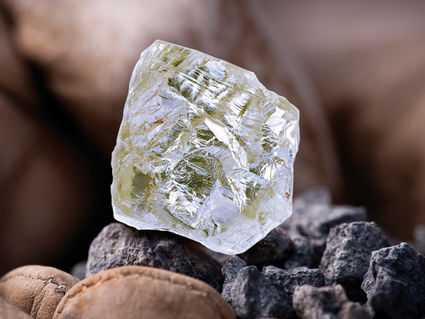Territory stumbles in race for riches
Northwest Territories presents mining industry with mixed bag North of 60 Mining News – August 1, 2018
Last updated 9/25/2020 at 5:57am

Dominion Diamond Corp.
Northwest Territory is renowned for the quality diamonds recovered from three world-class mines there, including this 187.7-carat gem known as Foxfire, the largest diamond recovered from the Diavik Mine.
Northwest Territories may fall behind Canada's two other territories in mining activity in the near-future, but projects underway in the northern jurisdiction hold substantial promise for mid- to long-term gains, especially if many current roadblocks come down.
"Optimism is warranted for the territory's mining sector and the broader economy it drives," said Wally Schumann, minister of industry,...
For access to this article please
sign in or
subscribe.







Reader Comments(0)